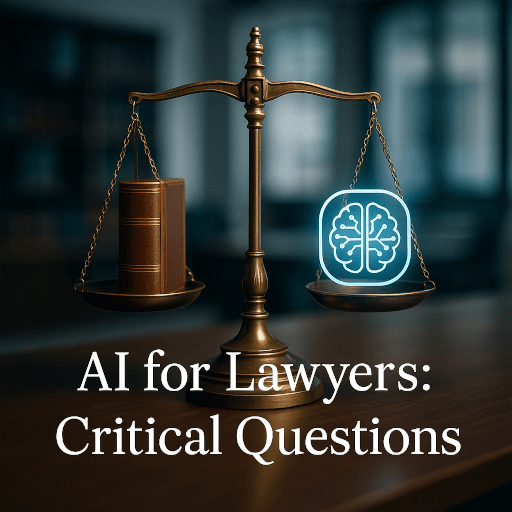A partner at a competing firm just landed a major client by leveraging AI for a faster, more cost-effective e-discovery process. Meanwhile, you’re staring at a mountain of documents, feeling both the immense pressure to adopt artificial intelligence and the professional paralysis of not knowing where to start. You’re acutely aware of the risks—to client confidentiality, to ethical compliance, to your firm’s reputation. But the rewards, in terms of efficiency and competitive advantage, are too significant to ignore.
This is not another high-level overview of AI. This is a practical, authoritative guide designed to move your firm from curiosity to competence. We will answer the ten toughest and most urgent questions lawyers are asking about AI, providing actionable strategies for responsible adoption. We’ll cut through the hype to address your core concerns around efficiency gains, ethical duties, client data security, tool selection, and the very future of the legal business model.
To create this definitive resource, Legal Intel has synthesized guidance from top legal authorities, bar associations, and technology experts. Let’s begin.
1. The efficiency question: how does AI practically benefit a law firm today?
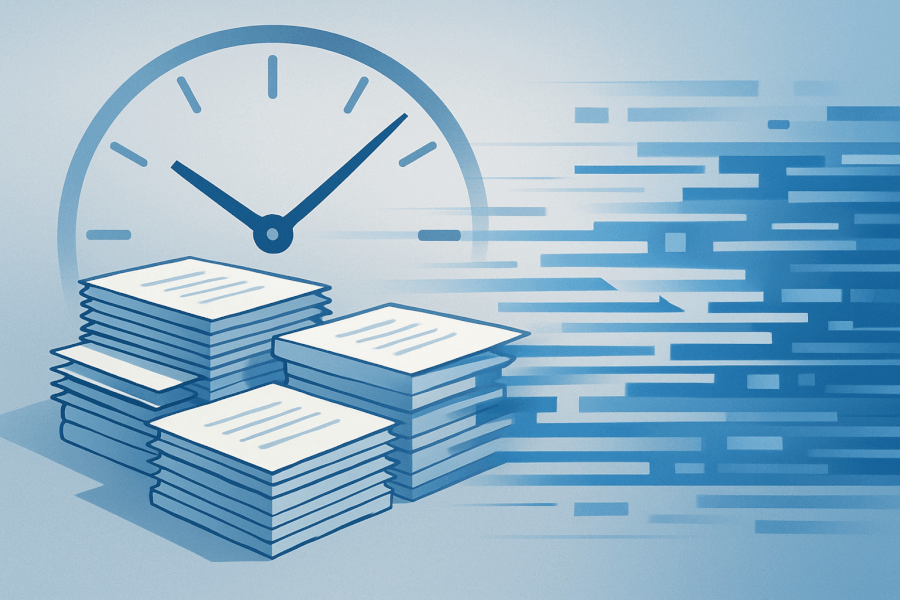
The most immediate and tangible benefit of legal artificial intelligence is its ability to reclaim your most valuable asset: time. It achieves this by targeting two key areas: automating burdensome tasks and augmenting the quality of your legal work.
Automating high-volume, low-complexity tasks
Many of the hours logged at a firm are spent on necessary but repetitive work. This is where AI delivers its first wave of ROI.
- E-discovery: The manual review of documents in litigation is a prime example of inefficiency. AI-powered e-discovery platforms can analyze millions of documents, emails, and files for relevance, privilege, and key concepts in a fraction of the time and cost of a human review team.
- Contract analysis: For firms dealing with large contract portfolios, AI tools can instantly identify key clauses, dates, obligations, and deviations from standard templates. This accelerates due diligence for M&A transactions and improves contract lifecycle management.
- Legal research: We’ve moved far beyond simple keyword searches. Modern tools using legal artificial intelligence, such as CoCounsel or Lexis+ AI, employ semantic search. This means they understand the concept of your query, not just the words, allowing them to find on-point case law and nuanced legal arguments with far greater speed and accuracy.
Enhancing legal work product and strategy
Beyond automation, AI serves as a powerful assistant, augmenting the strategic work that only a lawyer can perform.
- Initial document drafting: AI can create a solid first draft of motions, discovery requests, or client communications. This isn’t a finished product, but it provides a structured foundation for the lawyer to then refine, edit, and infuse with legal strategy, saving hours of preliminary work.
- Predictive analytics: An emerging use for AI involves analyzing vast datasets of historical case law and litigation outcomes. This can help forecast the likely success rate of certain arguments, predict a judge’s potential leaning on a motion, and inform a more data-driven case strategy.
For a deeper look at specific platforms, explore our complete guide to AI for lawyers.
2. The confidentiality question: how do i protect client data with AI?
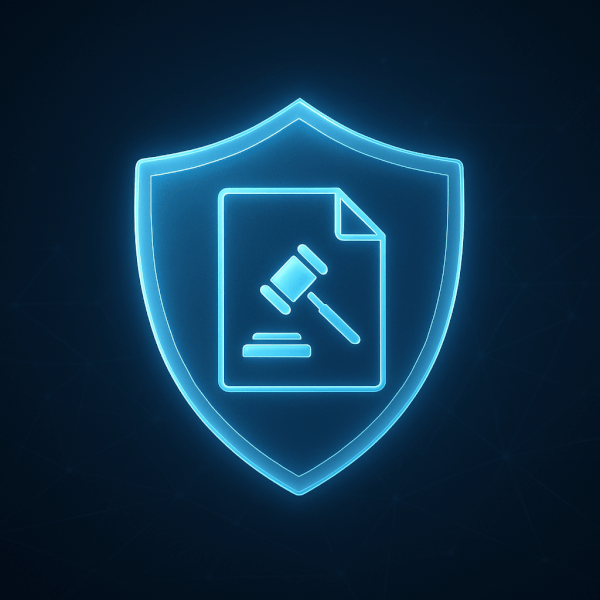
This is arguably the most critical question, and the answer requires a clear understanding of the technology you’re using. Protecting client data is not just a feature; it’s a foundational requirement for any legal AI tool.
Understanding the fundamental risk: public vs. private AI
The biggest risk to client confidentiality is using public AI tools (like the free, consumer version of ChatGPT) that may use your inputs to train their models. When you enter a query containing confidential client information into such a system, you may be inadvertently feeding that data into a public domain, creating an irreparable breach.
The distinction is simple: consumer-grade tools often have data policies that are completely unacceptable for legal work. Professional-grade, legal-specific AI tools are built on a “zero-retention” or private tenancy model. This architecture ensures that your firm’s data and your queries are kept in a secure, isolated environment. Your confidential information is never used to train the developer’s model and is deleted after the query is processed.
Key security protocols to demand from any AI vendor
When vetting a potential AI partner, your due diligence must be rigorous. Treat it with the same seriousness as securing your physical office. Demand clear answers on the following:
- Data encryption: Insist on end-to-end encryption, which protects your data while it’s being sent to the AI (in transit) and while it’s stored on their servers (at rest).
- Access controls: The tool must allow your firm to set granular user permissions. Not every user needs access to every file or feature. This prevents internal data leaks and ensures compliance with the principle of least privilege.
- Compliance certifications: Look for vendors who have undergone independent security audits and achieved certifications like SOC 2 Type II. This is a third-party validation that their security practices are sound.
- Data residency: You need to know where your data is physically being stored. This is crucial for complying with jurisdictional regulations and data sovereignty laws.
3. The ethics question: what are my duties regarding AI-generated work?
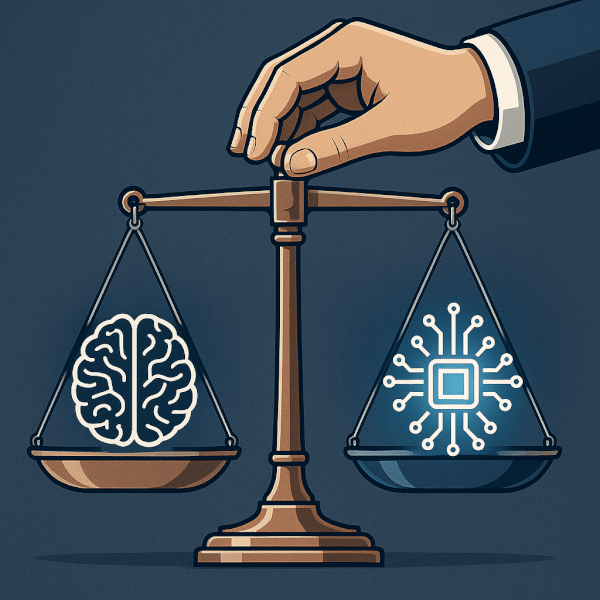
Your ethical duties are not suspended just because you are using a new tool. In fact, the use of AI invokes core professional responsibilities, primarily the duties of competence, supervision, and confidentiality.
The duty of competence and the necessity of human oversight
Your primary ethical duty is to ensure the final work product is accurate and reliable, which requires mandatory human review and verification of all AI-generated outputs. Relying on an AI’s output without independent verification is a clear breach of the duty of competence.
The legal community has already seen the consequences of blind reliance. In a widely publicized 2023 case, two lawyers were sanctioned by a federal judge for submitting a brief containing entirely fabricated case citations invented by ChatGPT. This phenomenon, known as “hallucination,” is a known limitation of some AI models. They can, and sometimes do, invent facts, citations, and legal precedents. To mitigate this risk, your firm should implement a rigorous verification checklist or a “two-person rule” for any AI-assisted legal research or drafting before it is submitted to a court or client.
Supervision, bias, and accountability
The duty to supervise subordinate lawyers and staff now extends to the “supervision” of your technology.
- Guidance and Accountability: Recent guidance from the American Bar Association (ABA) and various state bars makes it clear: the lawyer, not the AI vendor, is ultimately responsible to the client and the court for the work product. You cannot delegate your professional judgment or accountability to an algorithm.
- Algorithmic Bias: You must be aware that AI models trained on historical data may inadvertently perpetuate societal biases present in that data. A lawyer has a duty to critically assess AI outputs for potential bias and ensure that the advice given is fair and equitable.
4. The selection question: how do i choose the right legal AI tools?
The legal tech market is crowded and rapidly evolving, making the process of choosing the right tools feel overwhelming. The key is to move past the marketing hype and apply a strategic framework to vet potential vendors based on the principles that matter most to a law firm.
A strategic framework for vetting legal AI vendors
Based on our deep experience in the legal technology space, Legal Intel has developed a proprietary checklist to help firms make informed decisions. This framework focuses on the non-negotiable requirements for any technology handling sensitive client matters.
The Legal Intel AI tool vetting checklist
Use this table as a scorecard when evaluating any potential AI vendor. A “no” on any of the security questions should be an immediate disqualifier.
| Category | Vetting Question | Why It Matters |
|---|---|---|
| Security & Confidentiality | Data Policy: Do they use client inputs for training? | Must be NO. Using client data for training is a confidentiality breach. |
| Data Encryption: Is data encrypted end-to-end? | Protects data from being intercepted or accessed while in transit or at rest. | |
| Access Controls: Can you set user-specific permissions? | Prevents unauthorized internal access and enforces need-to-know principles. | |
| Accuracy & Reliability | Hallucination Mitigation: What measures prevent false info? | You need to know how they reduce the risk of fabricated cases or facts. |
| Verifiable Sources: Does the tool cite its sources? | For research, outputs must link back to real case law or statutes for verification. | |
| Legal-Specific Training: Was the model trained on legal data? | A model trained on a curated corpus of legal documents will be more accurate. | |
| Integration & Workflow | System Integration: Does it integrate with your existing systems? | The tool should fit into your workflow, not force you to create a new one. |
| User Interface: Is the tool intuitive for lawyers? | It must be user-friendly for legal professionals, not just IT experts. | |
| Vendor Support: What level of training and support is provided? | Strong vendor support is crucial for successful adoption and troubleshooting. |
“When choosing an AI tool, the single most important question is about their data policy. If a vendor cannot give you a clear, unequivocal ‘no’ to the question ‘Do you use my data for training?’ then the conversation is over. Everything else is secondary to that.” – Legal Tech Expert
5. The business question: how will AI change my firm’s business model?
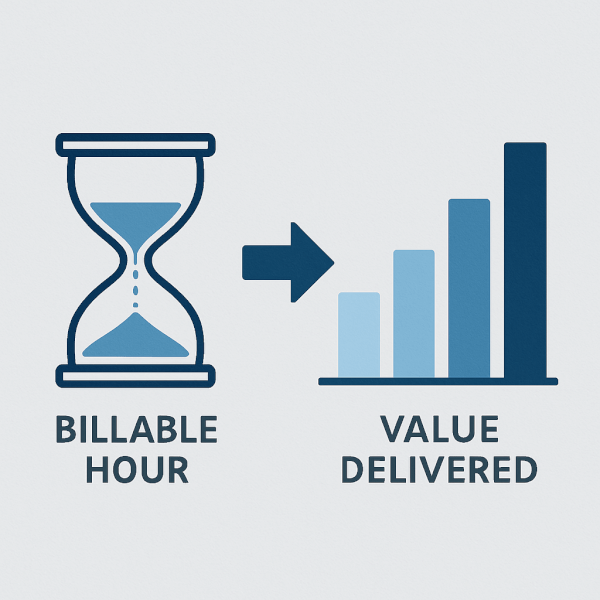
This is a critical topic that many firms are hesitant to address. Artificial intelligence directly challenges the traditional billable hour, the bedrock of the legal profession’s business model for decades. Proactive firms see this not as a threat, but as an opportunity to deliver more value to clients.
Moving beyond the billable hour
The central conflict is simple: AI dramatically reduces the time required for tasks that were once major revenue drivers. Spending 80 hours on document review is no longer justifiable when an AI can do it more accurately in a fraction of the time. Continuing to bill by the hour for these tasks will become unprofitable and will be rejected by clients.
The strategic alternative is a shift toward value-based pricing models.
- Fixed Fees: For predictable work like contract review, formation, or compliance assessments, offer a fixed fee. You use AI to manage your costs internally, and the client gets price certainty.
- Subscription Models: For clients needing ongoing advice, offer a subscription for access to legal counsel, where AI helps you answer their questions and manage their needs efficiently.
- Success Fees: In litigation or transactional work, align your compensation with the positive outcome you achieve for the client.
Communicating AI’s value to clients
Transparency is key. Frame your firm’s use of AI as a direct client benefit.
Instead of hiding your new efficiency, lead with it: “We leverage advanced technology to deliver faster, more cost-effective results for you. This allows our lawyers to focus their time on high-value strategic counsel, negotiation, and advocacy—the work that truly makes a difference in your case.” This reframes the conversation from hours worked to value delivered. To understand more about this transformation, read about how AI is transforming the legal profession.
The evolution of roles: augmenting, not replacing lawyers
The fear that AI will replace lawyers is pervasive but misses the point. AI is a tool for automating tasks, not for replicating human judgment. It excels at answering “what”—what does this document say? What case law is relevant? Lawyers provide the “so what”—what does this mean for my client’s business? What is the winning strategy? What is the most ethical path forward?
This technological shift will elevate the role of the lawyer, demanding a greater focus on skills that AI cannot replicate: strategic thinking, client counseling, empathy, and creative problem-solving.
Frequently asked questions about AI in the legal profession
Will AI replace lawyers?
No, AI is not expected to replace lawyers but will instead augment their capabilities by automating routine tasks, allowing lawyers to focus on strategic, high-value work that requires human judgment and empathy.
What are the ethical obligations for lawyers using AI?
The primary ethical obligations include maintaining competence by understanding the AI tool’s limitations, ensuring the accuracy of its output through human verification, protecting client confidentiality, and supervising its use to prevent errors and bias.
Who is responsible if an AI-powered tool makes an error?
The lawyer or law firm is ultimately responsible for any errors made by an AI tool, as the duties of competence and supervision require them to verify all work product before it is delivered to a client or submitted to a court.
How can lawyers ensure client confidentiality when using AI tools?
Lawyers can ensure confidentiality by using professional-grade AI tools with explicit ‘zero-retention’ data policies, verifying vendor security protocols like encryption, and strictly avoiding public or consumer-grade AI platforms for any client-related work.
From curiosity to competence: embracing the future of law
Artificial intelligence presents a transformative opportunity for the legal profession. However, its adoption cannot be a technological free-for-all. It must be a strategic, deliberate process managed with an unwavering focus on client confidentiality, ethical integrity, and rigorous human oversight.
The goal is not for every lawyer to become a technologist. The goal is to become a tech-enabled lawyer who can deliver better, faster, and more efficient services to clients. By understanding the real risks and leveraging the proven benefits, you can move your firm confidently from a state of curiosity to one of true competence. You now have the knowledge to begin vetting tools, developing policies, and taking the first step into the future of law.
Ready to take the next step? Download our comprehensive ‘Firm-Wide AI Usage Policy Template’ to establish clear guidelines for your team.
